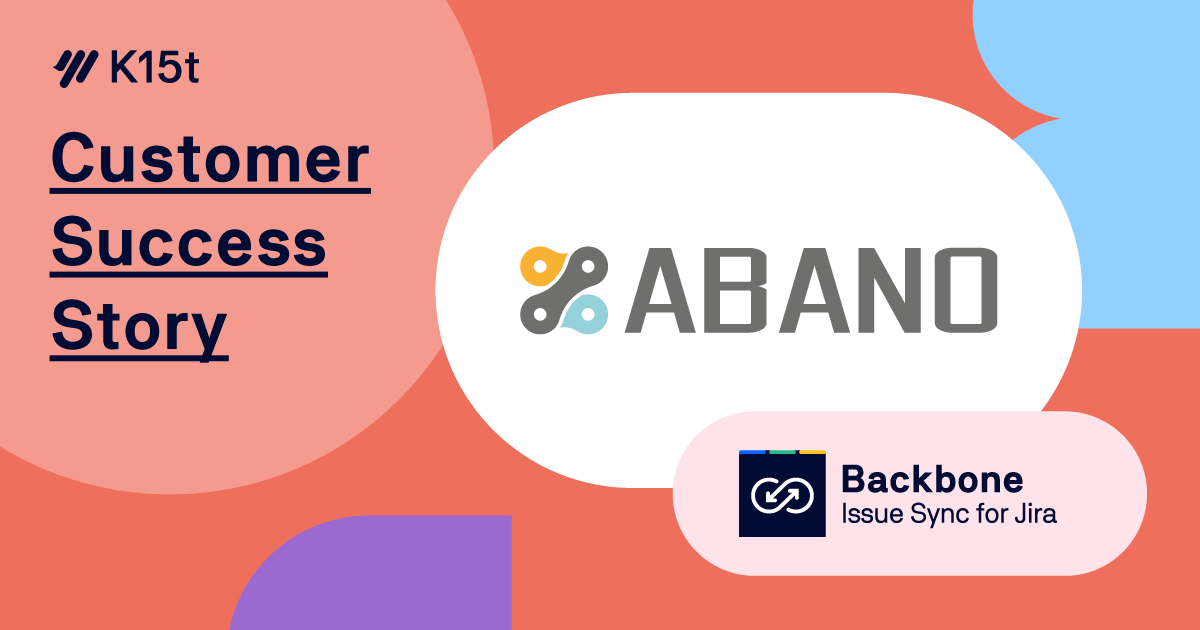Abano NV is a Platinum Atlassian Solution Partner based in Kontich, Belgium, with years of experience advising Belgian and international clients on optimizing processes and operations using Atlassian tools. Abano has been working closely with a key Belgian public service department and has been helping guide their digital transformation since 2021.
As part of the project, the government department launched a digital portal based on Jira Service Management (JSM) to automate the request creation process for the public. Abano also helped introduce two JSM help desks to collect and process inquiries. But as with any project, this digitalization came with its challenges, the topmost being keeping tickets across the two JSM instances in sync and ensuring everyone has the correct and up-to-date information.

Read on as Abano NV’s consultant, Nathan Dobbelaere, shares how the public service department overcame the challenges of working across multiple Jira Service Management (JSM) instances, improved operational efficiency, and delivered a great user experience using Backbone Work Sync for Jira.
The Challenge: Keeping Teams on the Same Page
The new workflow involved a public help portal and two different JSM instances: one connected with the public portal for the first-level support and the other for second/third-level support and request management, operated by separate teams. The public would submit requests via the help portal, which would then either be resolved on the first-level JSM instance or be triaged to the second/third-level JSM instance for further investigation and processing.
To avoid miscommunication and ensure timely resolution of requests, relevant tickets must be updated simultaneously across both JSM instances. If a ticket is updated on one side but not the other, delays and errors in request processing become frequent, meaning the public has to wait longer for their requests to get resolved.
A common way around this is to have users jump between the two instances and manually copy-paste the updates into the JSM tickets. However, this traditional method is time-consuming, prone to errors, and costly due to the need for additional JSM agent licenses.

Nathan needed to find a solution to handle this complexity while also maintaining strict data privacy and security requirements.
The Requirements
-
Seamless communication between the two JSM instances for faster collaboration and quicker resolution of requests
-
Timely implementation without compromising the security and privacy of sensitive data
Improving Efficiency Through Streamlined Ticket Management
Backbone Work Sync for Jira provided the ideal solution. Connecting the two JSM instances using Backbone allowed relevant tickets and associated information to be synced and kept up-to-date at all times. This enabled teams to continue working in their respective JSM instances while easily communicating with the other instance, significantly improving their workflow.

Real-Time Ticket Syncing Made Easy
After connecting the two instances with Backbone, employees can automatically copy and sync relevant tickets. For example, a user can add a label like “vehicle-fine-request” to a ticket, which automatically syncs it to the other instance in real time thanks to Backbone’s JQL filter functionality. This ensures that employees work on requests immediately without leaving their instance, with all updates automatically synced on both instances.
The department maintains complete control over which Jira work items to sync, including work item types, fields, comments, attachments, and workflows, which helps them address privacy concerns and prevent information loss.
Webinar: Learn How 3 Organizations Saved Time and Money by Syncing Work Items Across Jira Instances
Delivering Value Right Away
Being a government department, Abano’s client couldn’t afford to have any disruptions to its operations or wait a prolonged period to implement changes to their internal processes. Given these requirements, opting for Backbone came in handy. Nathan shares:
“Selection of Backbone was a no-brainer because it’s easy and quick to set up. There was a need to go fast, which is almost always true with most companies. I’m not a technical person, but I didn’t have to look up too much documentation to get Backbone to work; the software almost spoke for itself. It was quite easy to convince the customer because Backbone’s interface was the easiest to use without a huge learning curve.“
He added,
“If I were a new consultant now, it would take me an hour or two at most to understand how Backbone is set up, how it works, and that’s the most important thing for me.”

Moreover, avoiding additional JSM agent licenses for each JSM instance led to considerable cost savings.
Digital Transformation With Security and Privacy of Data
Concerns about data security and privacy were addressed rather easily as well. Backbone Work Sync is part of Atlassian’s Cloud Fortified and Security Bug Bounty programs. In addition, the app offers encrypted data transfer and has been trusted by hundreds of enterprise customers for more than 11 years, from government departments to industries like banks, financial services, and manufacturing. With the recent release of features like data residency and sync with approval, it is perfectly aligned with the data security needs of modern enterprises and the public service sector.
Value Offered by Backbone
-
Ease of use and simple UI
-
No-code setup and straightforward to get started
-
Compliant with strict security and data privacy standards
-
Reliable performance and easy-to-maintain configurations
Big Plans Ahead!
Spurred on by the success of this implementation, the public service department plans to extend Backbone’s application to the rest of their JSM spaces (nine in total).
Results Achieved
-
Reduced costs
-
Faster ticket resolution rates
-
Optimized processes
-
Guaranteed security, flexibility, and data privacy
Operational Excellence Unlocked
The transformation was as much cultural as it was technological. The government department has embraced faster and more efficient operations, with Backbone Work Sync serving as a valuable asset in its complex IT service management environment.
![☁️ [Live] A Smarter Path to Jira Cloud Migration](/__attachments/a_5377e2f6d876b7e7890e1c26c625930cdce5076d7f2fcf6424357f60e1249d24/Webinar-Teaser-Image_2512_Cloud_Migration_Live_Event@2x.png?cb=b1886d610241b181148221213ee31e9e)